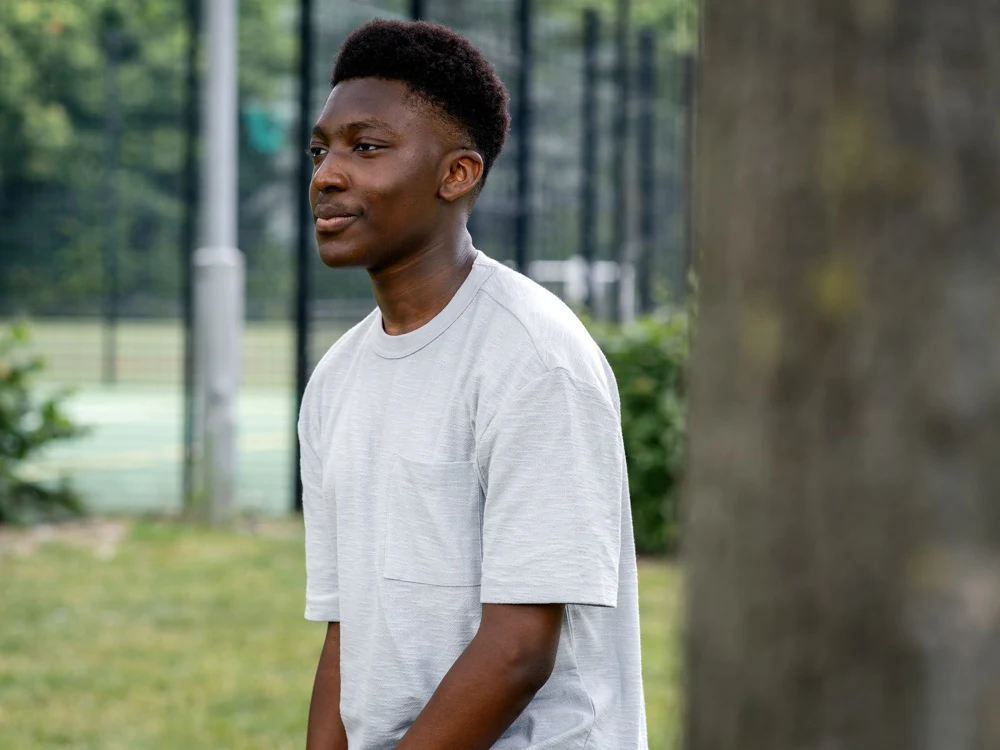Goal setting in digital mental health
Goal setting is effective for behaviour change and shows promise as an important part of successful mental health interventions. Research shows that goal planning enhances motivation, directs effort, and focuses the development of strategies to improve outcomes.
By recognising and leveraging the power of goal setting, digital mental health platforms can significantly enhance their effectiveness in supporting the mental wellbeing of young people.
An opportunity for engagement
Engagement and retention of young people within mental health services can be challenging, but clinical tools such as goal setting may keep young people engaged in services longer. Young people value the importance of goal setting and actively seek out tools that facilitate this process. This motivation presents a significant opportunity to engage them effectively and foster greater participation in their mental health journey.
Goal setting plays a fundamental role in the personal and academic growth of teenagers. To support positive outcomes, data indicates goals should be collaboratively developed, relevant to the person, include a component of measurability, and challenging but achievable. Research has long recognised the importance of setting goals and independent decision-making. As teens navigate the complexities of growing up, having clear goals provides them with a sense of direction and purpose.
Impact of goal setting on mental health
The integration of goal setting within mental health support is not merely an add-on; it's a fundamental element in promoting positive change. Research indicates that having a goal gives hope to young people experiencing mental health challenges.
When used appropriately, goal setting can positively influence young people’s emotional state, productivity, and outlook on the future. Setting goals leads to better mental health by reducing anxiety, depression, and stress. The structured nature of goal setting can break down overwhelming challenges into manageable steps, thereby changing an idea into a concrete action plan. When teens have a plan and a sense of control over their future, they are less likely to feel overwhelmed. Empowering young people to define and work towards their objectives fosters a sense of agency and self-efficacy.

Top goals for young people
Several studies have examined the top goals of young people in online counselling sessions. One study found that the top priorities for teens were to improve mental and emotional wellbeing and connect with others.
In another study, researchers identified the primary goal as self-help and self-care. Understanding the common goals that young people present with in counselling sessions can further refine the development of digital interventions, like Soluna and Kooth, to include proactive tools and activities to support these goals:
- •
Addressing anxiety, low mood, and emotional regulation
- •
Fostering healthy relationships and reducing feelings of isolation
- •
Boosting motivation and engagement by supporting participation in school, hobbies, and personal interests
- •
Prioritising self-care by encouraging healthy habits that support wellbeing
Collaborative goal setting
Setting goals while in session with a counsellor helps with retention in mental health. When young people set goals by themselves, they struggled with self-motivation to move toward their goals or felt the goals were unachievable.
Known limiting factors in goal setting include: individual preferences, high levels of distress, trauma, low confidence, hopelessness, negative experiences with past goals, perfectionism, and a tendency to ruminate on negative thoughts and emotions.
Setting goals with a practitioner can make the process less intimidating. By helping young people focus on a specific attainable goal, filtering out external distractions and self-doubt, and aiding the young person’s accountability for progress, desired outcomes can be achieved.
- •
Kooth’s practitioners help children and young people (CYP) to set achievable goals, providing the flexibility for CYP to set goals independently before a session or collaboratively with their counsellor during the session. When the practitioner and young person work together to create goals in a safe, shared space, it ensures the plan of action is both achievable and personally meaningful.
- •
By incorporating goal setting into their counselling chat sessions, Soluna creates a personalised and values-aligned experience for young people. This goal-based framework aligns with Kooth's person-centred model, leading to meaningful changes in young people's lives as they set and strive towards their goals.
Progress tracking
Drawing from a positive psychology framework, Kooth’s approach centres on the strengths of young people. This framework acknowledges, values, and supports the efforts of young people, ensuring that it meets their psychological needs.
By harnessing their strengths, skills, and experiences, Kooth empowers young people to set goals that align with their values and aspirations and measure progress either over time or after a single session:
- •
The Goal-Based Outcomes tool (GBO) is a Kooth feature that allows users to monitor their progress over time, providing visual reinforcement and sustaining motivation
- •
The Session Wants and Needs Outcome Measure (SWAN-OM) offers a mechanism to assess immediate goal achievement within single therapy sessions, providing valuable feedback and promoting a sense of accomplishment
Conclusion
Goal setting is a valuable and promising component of digital mental health interventions which is why Kooth and Soluna offer a safe and supportive space for young people to establish and actively work towards their goals.
When implemented thoughtfully with user-centred design and evidence-based strategies, goal setting features can enhance engagement, promote a sense of agency, and contribute to positive mental health outcomes for young people.
REFERENCES
- •
- •
Cairns, A.J., Kavanagh, D.J., Dark, F. et al. (2019). Goal setting improves retention in youth mental health: a cross-sectional analysis. Child and Adolescent Psychiatry Mental Health, 13, 31.
- •
Epton, T., Currie, S., & Armitage, C. J. (2017). Unique effects of setting goals on behavior change: Systematic review and meta-analysis. Journal of Consulting and Clinical Psychology, 85(12), 1182–1198. https://psycnet.apa.org/doi/10.1037/ccp0000260
- •
Ersahin, Z. (2016). Therapeutic Goals in Online Youth Therapy: What Goals Do Young People Identify and How Do Counsellors Work with Them? (Doctoral dissertation, University of Manchester). https://pure.manchester.ac.uk/ws/portalfiles/portal/57430274/FULL_TEXT.PDF
- •
Hanley, T., Sefi, A., & Ersahin, Z. (2015). “From goals to tasks and methods” in The Handbook of Pluralistic Counselling and Psychotherapy. Eds. M. Cooper and W. Dryden (London: Sage), 28–41.
- •
- •
Jacob, J., Stankovic, M., Spuerck, I., & Shokraneh, F. (2022). Goal setting with young people for anxiety and depression: What works for whom in therapeutic relationships? A literature review and insight analysis. BMC Psychology, 10(1), 171.
- •
Locke, E.A., & Latham, G.P. (2002). Building a practically useful theory of goal setting and task motivation: A 35-year odyssey. Journal of Adolescence. 57(9), 705–717.
- •
Penno, J., Hetrick, S., & Christie, G. (2022). “Goals give you hope”: An Exploration of goal setting in young people experiencing mental health challenges. International Journal of Mental Health Promotion, 24(5), 771–781. https://doi.org/10.32604/ijmhp.2022.020090
- •
Smith, N., Janbakhsh, M., Gay, H., Limond, J., & Parker, J. (2023). Therapeutic Goal Types in Young People’s Mental Health Providers and Changes in Anxiety and Mood. Journal of Child and Family Studies, 32, 3731–3741. https://doi.org/10.1007/s10826-023-02667-0
- •
Stewart, V., McMillan, S. S., Roennfeldt, H., El-Den, S., Ng, R., & Wheeler, A. J. (2021). Exploring goal planning in mental health service delivery: a systematic review protocol. BMJ open, 11(5), e047240. https://doi.org/10.1136/bmjopen-2020-047240




